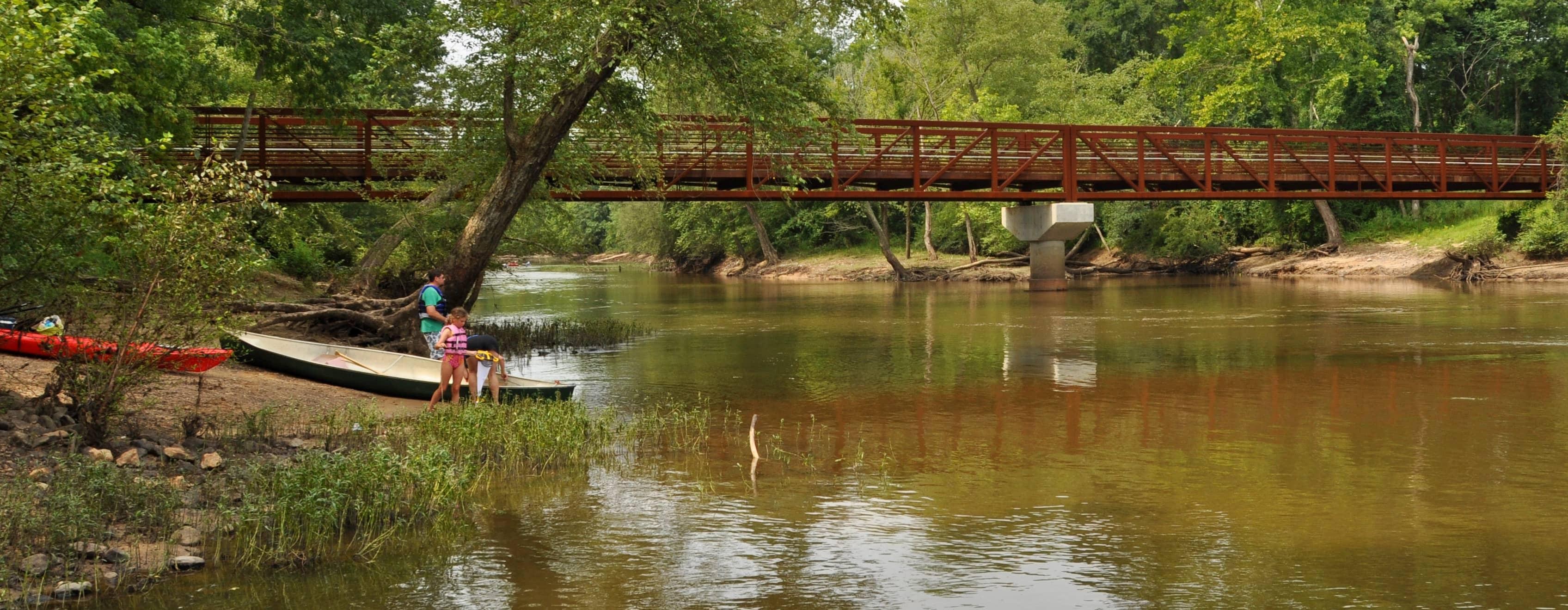National Conservation Group Names the Neuse 'River of the Year'


The Neuse River has had its share of challenges with pollution, fertilizer runoffs from nearby farms, waste from large industrial animal farming operations, and runoff from developed areas.
But progress has been made in cleaning up the waterway, and because of that the national river conservation group American Rivers named the Neuse River its 2022 “River of the Year”. The announcement was made at a news conference in Goldsboro, NC.
“The River of the Year honor celebrates the outstanding progress towards a cleaner, healthier Neuse River that is the lifeblood of this region,” said Tom Kiernan, President of American Rivers. “It is because of the community, the state and the federal leadership that has worked so hard over the last several decades to improve the health of the river, improve the water quality of this river for the benefit of the people, the communities, and the nature in the region.”
It's a remarkable comeback story, but first a quick geography lesson.
The Neuse (derived from the Native American Neusiok tribe and translating to “peace”) River runs 275 miles from the Piedmont region to the Pamlico Sound on the coast. The headwaters are at the confluence of the Eno and Little Rivers, just before it flows into the Falls Lake Reservoir near Durham. The main river flows out of the reservoir.
The river runs fast at the upper part of the watershed but once it leaves the reservoir, the Neuse River widens and slows. There are several small creeks and streams that flow into the Neuse on its way to the coast, which is why its watershed covers almost 6,200 square miles.
The Neuse and Cape Fear Rivers, were once included on American Rivers’ list of the nation’s most endangered waterways. That was primarily because of the industrial agricultural waste within their river basins.
The Neuse was #7 in the group’s 2017 list. It made the list five more times in the 1990s and the 2000s because of massive fish kills and algae blooms.
“But that was not the fate you wanted for the Neuse,” said Kiernan. “Science pointed to excessive pollution from wastewater treatment facilities and from untreated urban and agricultural runoff.
Millions of dollars were spent to build new wastewater treatment facilities, improve farming practices, mitigate stormwater runoff, and protect and create buffers along the river.
North Carolina Department of Environmental Quality Secretary Elizabeth Biser said the state has completed the equivalent of 82 miles of stream mitigation, restored 10 square miles of wetlands and removed 1.5 million pounds of nitrogen from the river.
The announcement was made on the 50th anniversary of the Clean Water Act. It is Section 401 of the Act that gives states a tool to protect the water quality of federally regulated rivers within their borders. In collaboration with federal agencies, states can regulate permits and licenses for the building of any project that could harm a river.
Ironically, a challenge to that part of the law is now before the United States Supreme Court. The case questions the methods that are used to define federal jurisdiction. It was argued in October 2022. That provision helped clean up the Neuse River. If the challenge is successful, it could remove protections from 350,000 acres of Neuse River wetlands.
“It set in law the obligation to be good stewards of the environment as well as goals for what communities needed to do,” added Kiernan. “It’s a success story we must continue writing.”
With the help of the Clean Water Act, the state developed the Neuse Nutrient Strategy in 1997. It’s a set of rules to equitably regulate sources of wastewater, stormwater and agricultural pollution in the Neuse River basin. The rules have been updated several times. The original goal aimed for a five-year recovery.
That hasn’t happened.
DEQ officials say nutrient runoff into the river improved after the rules were approved. But over time, the numbers have increased.
“Significant progress has been made in agricultural loss reduction and the agricultural community in the Neuse basin consistently achieves its goal,” said Biser. “But the watershed is changing, and the challenge now is more than just nutrient management.”
Rules governing stormwater runoff from new developments must be strengthened. In addition, studies show that as climate change fuels tropical storms to become stronger and wetter, more organic nitrogen reaches the river from runoff in urban areas.
“The watershed must become more resilient to climate change, including updating sewer infrastructure and reducing agricultural waste from flood-prone areas of the watershed,” said Heather Deck, Executive Director of Sound Rivers.
“While parts of the river are still impaired and there is still much to do, we’ve come a long way,” added Michael Regan, Administrator of the U.S. Environmental Protection Agency, and the former director of NC DEQ.
